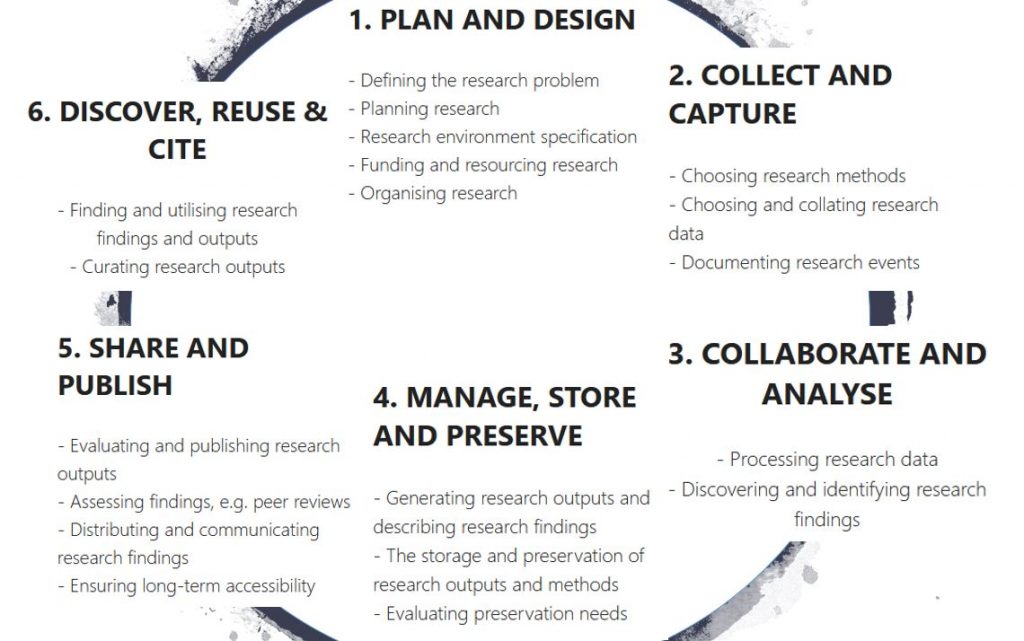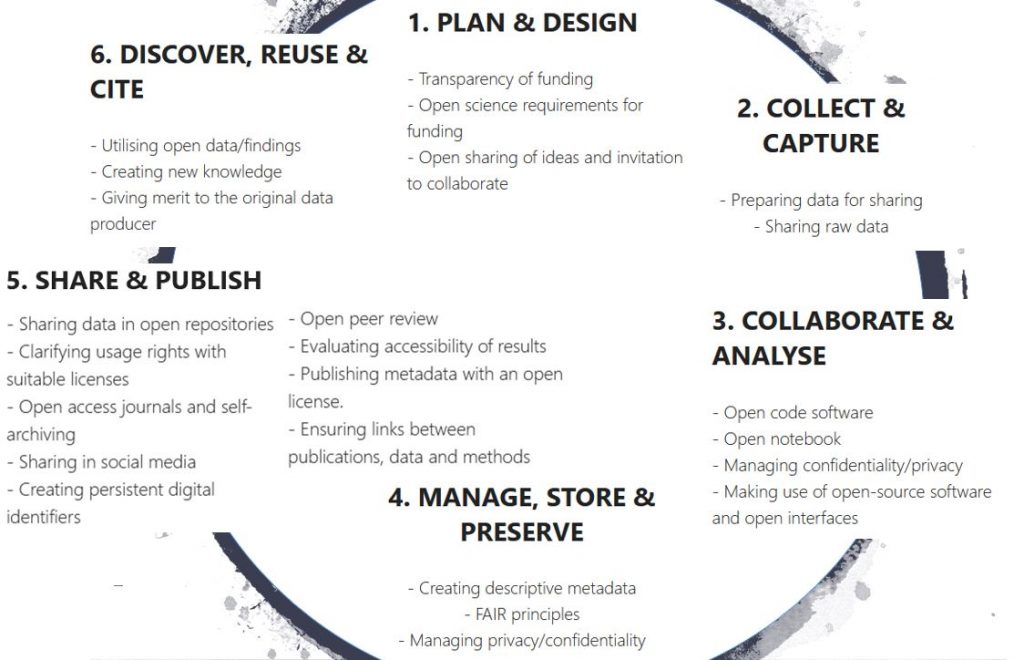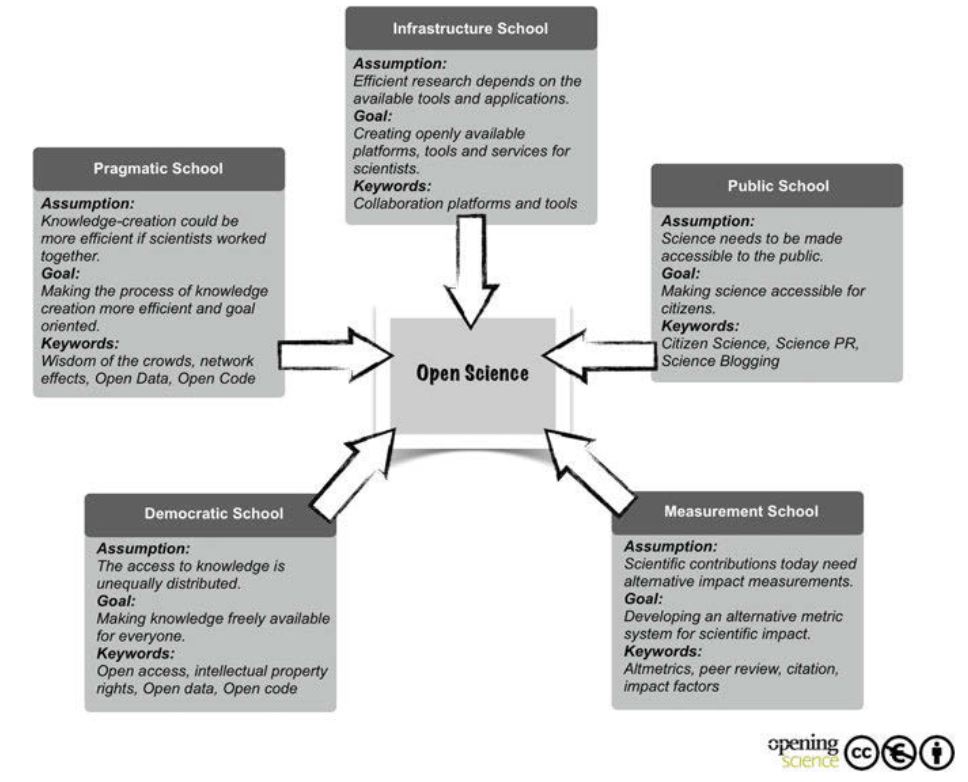What is open and responsible science?
After finishing this part, you will…
- Be aware of the basic concepts and aspects of open science.
- See open science as a part of the entire research life cycle.
- Understand open science as a current way to do science.
- Develop an understanding of some of the digital tools and practices involved in open science.
What and why? – Open science as a part of research life cycle
- Why should we change the way we do research?
- Why should we embrace open science as a new way of doing research?
- What are the challenges and opportunities to make this change towards openness happen?
- Should we change the way we consider the merits in science?
These are just examples of the questions that open science and the current movement in scientific practices arise.
Scholarship is changing, and that change can be summed up in one word: OPEN. Watch a short video Open access: democratising knowledge (7:15) leading to the world of open science.

Open science has traditionally been defined as a movement to make the primary outputs of publicly funded research results – particularly publications and research data – publicly accessible in digital format with no or minimal restriction. However, it is more than that. Open science is about extending the principles of openness to the whole research cycle (Fig. 1, 2), fostering sharing and collaboration as early as possible, thus resulting in a change to the way in which science and research is done.

Open science applies to all research disciplines: It extends across the life and physical sciences, engineering, mathematics, social sciences, and humanities. It is important to remember that actually, if you think profoundly, open science is not that different to traditional science. It just means that you carry out your research in a more transparent and collaborative way.
Opening the research process supports validation, reproducibility and reduces cases of academic misconduct. Open science aims at improving the quality and reliability of research through principles like inclusion, fairness, equity, and sharing. It helps to maximize the impact of your research and provides the foundations for others to build upon. In short, applying open science in your daily workflows is just part of good research practice!
Open science is an umbrella term. It can mean different things at different stages of the research life cycle. It is based on the principles of accessibility, transparency, re-use and collaboration. Open access to publications, open research data, open research methods, open source code, software and infrastructure, open collaboration, open peer review, open notebooks, open educational resources and citizen science can be regarded as components of open science (Fig. 3). Eventually, open science is about putting more science in society and more society in science.

Five viewpoints of open science
Open science is not a new concept, although its widespread use became more frequent in the 2010s. The tradition of openness itself is at the roots of science but the current developments of information and communication technologies have transformed the scientific practices to a level that requires a different approach to research that must be understood by all the agents involved: researchers, institutions, policy makers, publishers, businesses and society in general.
There are multiple approaches to the term and definition of open science. The Five Open Science Schools of Thought (Fecher & Friesike, 2014; see pp. 24-47) synthesizes these approaches. The most important aspects about these different viewpoints are simplified in Fig. 4.

The foundation of open science is complex but one of its main arguments states that scientific knowledge is a product of social collaboration and its ownership belongs to the community. Many funders around the world now require researchers to share outputs arising from the research they fund with as few restrictions as possible.
From an economic point of view, scientific outputs, particularly that of publicly funded research, are a public good that everyone should be able to use at no cost. Everyone should have an equal opportunity to access research outputs in a digital format and free of charge or other restrictions. Publicly funded research should be made available to support public trust in research, to support scrutiny and validation, to enable reuse, and to drive innovation.
UNESCO Recommendation on Open Science
One international tool for implementing open science practices around the world is UNESCO Recommendation on Open Science which was adopted by Member States in November 2021.
The Recommendation defines shared values and principles for Open Science, and identify concrete measures on Open Access and Open Data, with proposals to bring citizens closer to science and commitments to facilitate the production and dissemination of scientific knowledge around the world.
Recommendation is intended to influence the development of national laws and practices.
UEF Open Science and Research Policy
UEF Open Science and Research Policy (1.1.2024, in English, suomeksi) contains policies for open education, data and infrastructures, and publications. National and international guidelines and recommendations have been the significant framework for UEF’s policy.
Remember, open science aims at:
- Distributing knowledge openly and equally.
- Driving innovations.
- Increasing collaboration.
- Utilising new digital technologies and collaborative tools when practicing science.
(8/2024 KH)
Move to the next page “Benefits and challenges of open science“